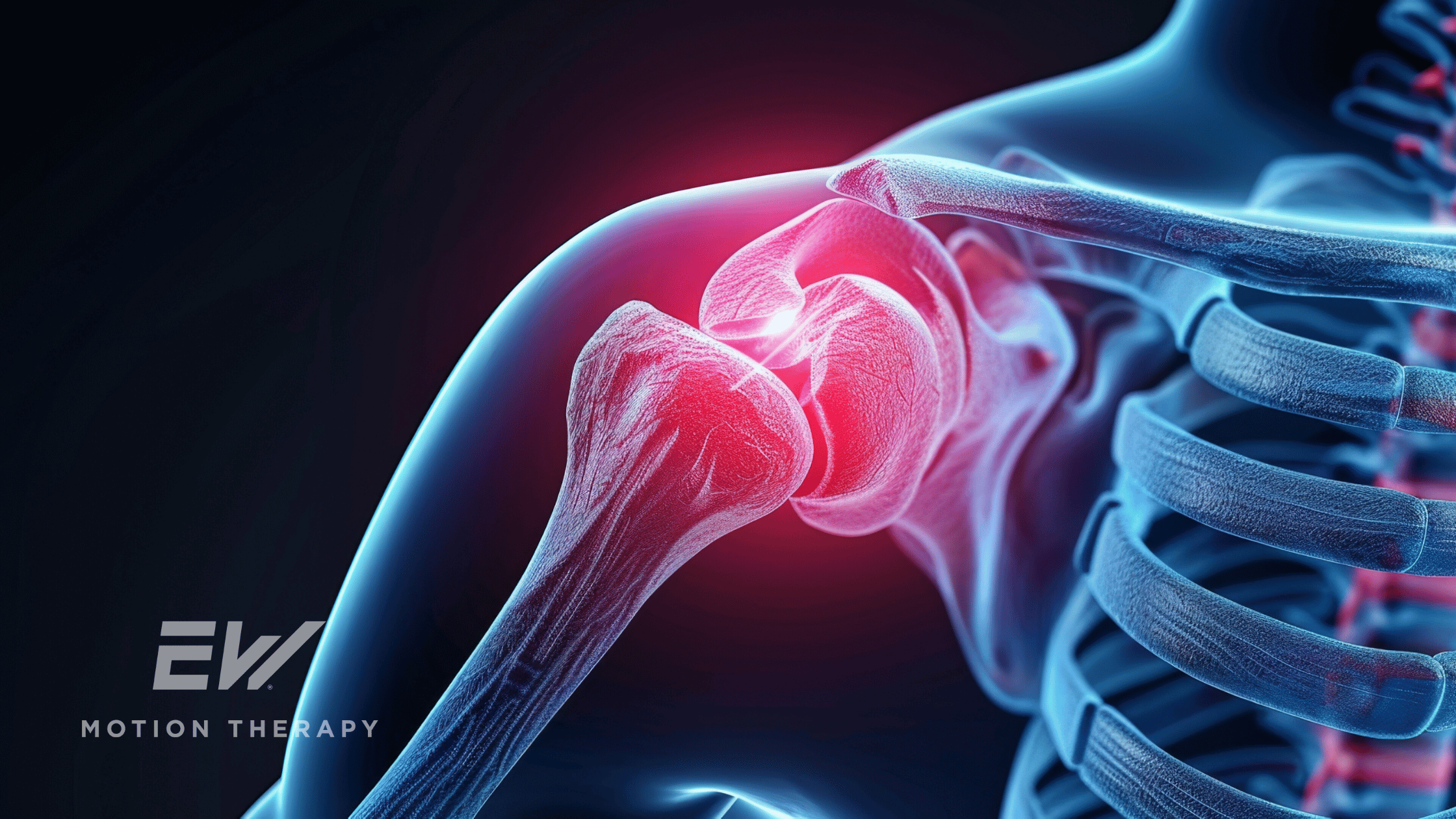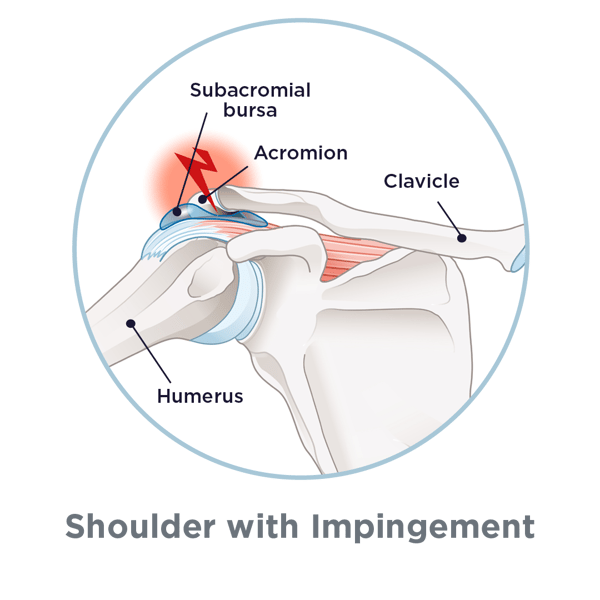Understanding Shoulder Impingement: Causes, Symptoms, and Treatment

Licensed Physical Therapist, PT, DPT // EW Motion Therapy Homewood
The shoulder is an incredible structure, providing us with the freedom to manipulate our environment in various planes of motion. From throwing a fastball at over 100 mph to working overhead for hours, the shoulder allows us to perform countless complex movements. However, this impressive mobility comes at the cost of stability, making the shoulder vulnerable to various conditions, the most common of which is shoulder impingement syndrome.
Understanding the shoulder
To understand shoulder impingement, it helps to first understand the structure of the shoulder itself. The shoulder joint, known as the glenohumeral joint, consists of the head of the humerus (upper arm bone) and the glenoid (part of the scapula or shoulder blade). The head of the humerus is much larger than the glenoid, which is why the shoulder has such a wide range of motion.
- The rotator cuff: The rotator cuff plays a crucial role in stabilizing the shoulder and facilitating movement. It is made up of four muscles: supraspinatus, infraspinatus, teres minor, and subscapularis. These muscles work together to produce movement and provide stability to the shoulder joint. Shoulder impingement occurs when the rotator cuff becomes pinched between two bones, leading to inflammation and pain.
Why does shoulder impingement happen?
The most common cause of shoulder impingement occurs in the space between the acromion (part of the scapula) and the head of the humerus. When you lift your arm, the head of the humerus should glide downward to prevent pinching. However, if this glide doesn't happen or if the space between the humerus and acromion is too narrow, the rotator cuff can become pinched.
Over time, this repetitive pinching leads to inflammation and pain, and in severe cases, tearing of the rotator cuff may occur. Muscle imbalances and rotator cuff weakness increase the risk of developing shoulder impingement, as they reduce the shoulder's ability to stabilize properly, leading to abnormal movement patterns.

Who is at risk?
Shoulder impingement is common in athletes and individuals whose sports or jobs require repetitive overhead movements. This includes:
- Sports: Swimming, baseball, tennis, and volleyball involve frequent overhead motions that can irritate the rotator cuff.
- Occupations: Jobs such as painting, construction, and mechanics also involve repetitive overhead work, increasing the risk of impingement due to constant strain on the shoulder.
What does shoulder impingement feel like?
Common symptoms of shoulder impingement syndrome include:
- Pain at the top of the shoulder: This pain can sometimes radiate down the outside of the upper arm.
- Pain with movement: The pain is often described as an ache that can turn into a sharp pain when reaching up or across the body.
- Disruption of sleep: Shoulder pain can make it difficult to sleep at night, especially if lying on the affected side.
How do I know if I have shoulder impingement?
To diagnose shoulder impingement, a healthcare practitioner will perform a thorough exam. Common diagnostic tools include:
- X-rays: To check for bone abnormalities or spurs.
- MRI: To assess soft tissue damage, such as rotator cuff tears.
- Ultrasound: To visualize real-time movement and identify areas of impingement or inflammation.
How do I treat shoulder impingement?
The treatment of shoulder impingement usually involves a combination of rest, physical therapy, medications, and in some cases, corticosteroid injections. Here’s a breakdown:
- Rest and activity modification: Resting the shoulder and avoiding activities that aggravate the pain allows the tissue to heal. This is often the first recommendation for individuals with shoulder impingement.
- Physical therapy: Physical therapy is crucial in addressing the root cause of impingement. A trained therapist will guide patients through strength and mobility exercises to restore normal shoulder function. Additionally, techniques to reduce pain, such as soft tissue mobilization, may be employed.
- Medications: Non-steroidal anti-inflammatory drugs (NSAIDs) can help manage pain and reduce inflammation. These can range from over-the-counter options, such as ibuprofen, to stronger prescription options, such as Mobic or Diclofenac.
- Corticosteroids: In more severe cases, a healthcare provider may recommend corticosteroid injections to reduce inflammation and provide relief from pain. These are typically performed as an in-office procedure by a healthcare provider.
The shoulder has an amazing yet complex structure. Shoulder impingement syndrome, though common, can lead to pain and dysfunction if left untreated. Fortunately, through proper diagnosis and treatment, individuals can recover and return to their normal activities. Whether through rest, physical therapy, or medications, managing shoulder impingement is possible, allowing you to restore function and reduce discomfort.
At EW Motion Therapy, our team of healthcare professionals is dedicated to helping individuals recover from shoulder impingement and other shoulder-related conditions. If you’re experiencing shoulder pain, contact us to learn more about how we can help you get back to your daily activities pain-free.
.png)

